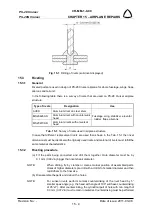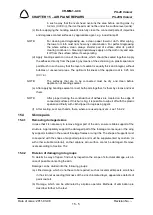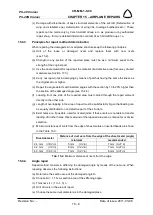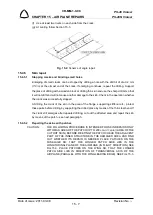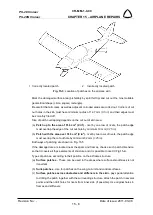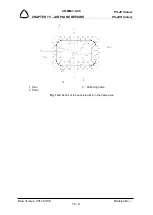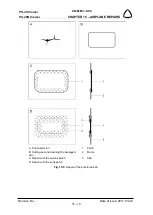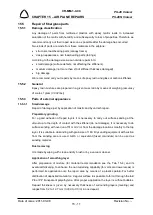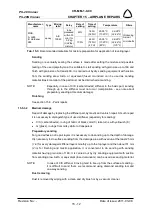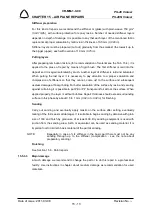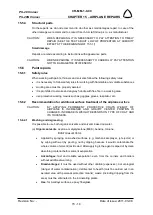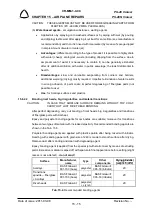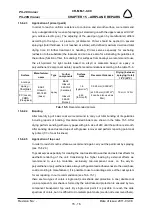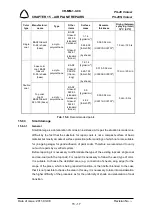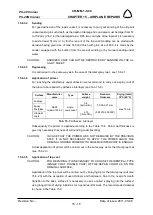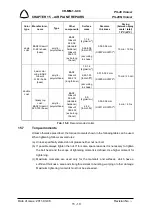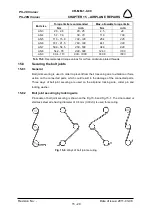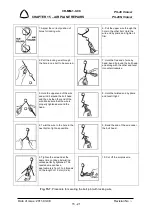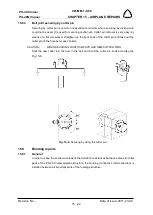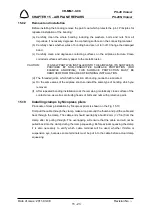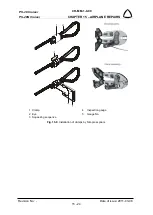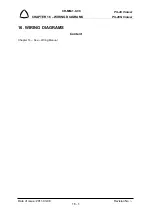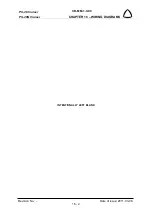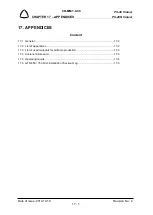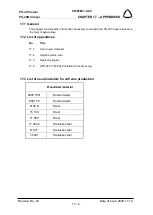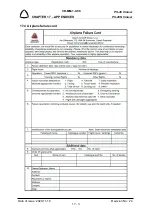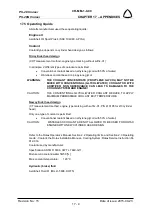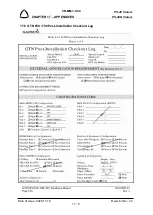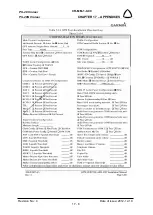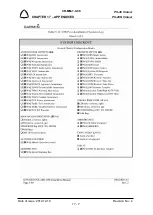
PS-28 Cruiser
PS-28N Cruiser
CR-MM-1-0-00
CHAPTER 15 – AIRPLANE REPAIRS
Revision No.: -
Date of issue: 2011-03-08
15 - 18
15.6.3.2
Sanding
For good adhesion of the repair coats it is necessary to carry out sanding of the old paint
coat at least up to such depth as the depth of damage. Ground area must be larger from 51
to 102 mm (
2 to 4 in
) than damaged area. With two-coat type of the topcoat it is necessary
to add at least 51 mm (
2 in
) for the run-out of the top coat. Sanding can be started with
abrasive having grain size of max. 160 and finish with grain size of 400. It is made by the
sander equipped with the suction from the area of sanding or by manual sanding under
water.
CAUTION:
ANODIZED COAT CAN NOT BE DESTROYED BY SANDING ON THE AL-
ALLOY SHEET.
15.6.3.3
Degreasing
It is carried out in the same way as in the case of the total spray coat - see 15.6.2.1
15.6.3.4
Application of primer
For reaching the satisfactory equal adhesion we recommend to carry out a spray coat of
the place to be repaired by adhesive interlayer (see Tab. 15-8).
Surface
Manufacturer,
name
Type
Surface
weight
Recomm.
thickness
Drying (total)
18°C (65°F)
Al-alloys
BASF
Glasurit 934-0
single-
component
0.8
[kg/mm/m
2
]
4.19
[
lb/inch/ft
2
]
0.005-0.01 mm
(0.00019-0.00039”)
max 15 min
Epoxy
fiberglass
Old paint
coats
Tab. 15-7
: Adhesive interlayer
Subsequently the primer is applied according to the Table 15-6. Paint coat thickness is
given by necessary thickness of surrounding coats (leveling).
CAUTION:
IN CASE THAT THE PRIMER WAS NOT REMOVED BY THE PREVIOUS
STEP, IT IS NOT NECESSARY TO APPLY THE PRIMER AGAIN. THE
ORIGINAL GROUND PRIMER WITH ADHESIVE INTERCOAT IS ENOUGH.
Actual application of primer will be carried out in the same way as for the total spray-coat
(see 15.6.2.3).
15.6.3.5
Application of top coat
CAUTION:
FOR REPAIRING IT IS NECESSARY TO CHOOSE THE IDENTICAL TYPE
(SINGLE COAT, DOUBLE COAT) OF THE REPAIR COLOR AS ON THE
ORIGINAL SURFACE.
Application of the top coat will be carried out by spraying as for the total spray coat (see
15.6.2.3) with the exception of used thinners and hardeners. Due to the need of smooth
transition to the basic surface it is necessary to use so called „spraying into the surface"
using longer time of drying initiations for a good result of work. The recommended material
is shown in the Table 15-9.

